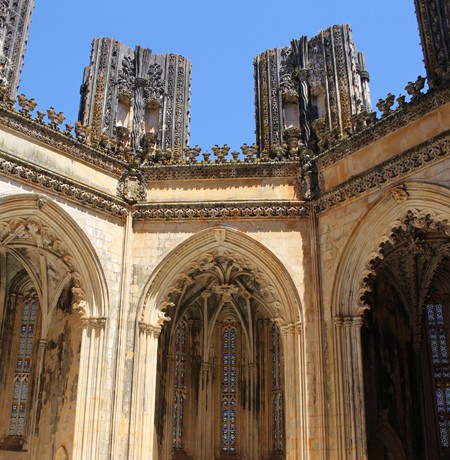The book that I have been writing at CASVA charts a middle course between those extremes by treating the eclipse of the Gothic architectural tradition across the whole of Europe as a problem that deserves careful study in itself. It argues that this tradition remained inherently vital from the twelfth century into the sixteenth, with no autumnal waning of creative energy even in the decades around 1500, which produced fantastic monuments, including the richly articulated but suddenly abandoned eastern chapels of Batalha Abbey in Portugal. It suggests, instead, that the extinction of the Gothic tradition reflected the impact of three largely exogenous factors: the rise of a rival architectural culture that championed the use of classical forms with a new theoretical sophistication; the appropriation of that architectural language by patrons eager to associate themselves with papal and imperial Rome; and the chaos of the Reformation, which disrupted the circumstances of church construction on which the Gothic tradition had formerly depended.
In my colloquium, I argued that the framing of this transition as an extinction event brought on by cultural climate change rather than as the natural consequence of artistic exhaustion offers important advantages. It allows the achievements of late Gothic builders to be appreciated in a nonjudgmental way, demonstrating that their geometrical design methods were sophisticated on their own terms, but that they translated poorly from the visual to the verbal sphere. By calling attention to the ways in which the story of late Gothic architecture has been told—and left untold, in many accounts of the northern Renaissance—this discussion can also reveal a great deal about the metaphors, models, and categorization schemes that continue to shape the discipline of art history even in the twenty-first century.
In the months following my colloquium, conversation with CASVA colleagues has helped me to develop my work in several valuable respects. First, it has given me a new sense of how my project relates to ongoing discussions about fashion, periodization, temporality, and the social history of art. Second, this interchange has allowed me to sharpen my argument, especially on the historiographical front. Most importantly, perhaps, the encouragement of expert colleagues from many subfields has helped to keep my morale high as I tackle this sprawling project.
To make the revisionist argument in my book, I have adopted an essentially chronological approach with a very broad temporal horizon. Having drafted my introductory chapter in the summer before my arrival at CASVA, I began in the fall by writing a sweeping survey chapter covering the period from antiquity to 1300, in which I traced the interplay between the classical architectural legacy and the innovative impulses that eventually gave rise to the Gothic. Over the course of the
I hope in the coming months to complete three more chapters, dealing respectively with the first and second thirds of the sixteenth century and with the postmedieval development of historiography on the character of late Gothic architecture. With luck, I will be able to complete the book in time for its publication to mark the fiftieth anniversary of the publication of an article that helped to inspire it, Jan Białostocki’s “Late Gothic: Disagreements about the Concept” (1966).
